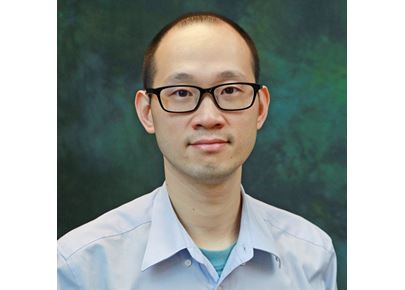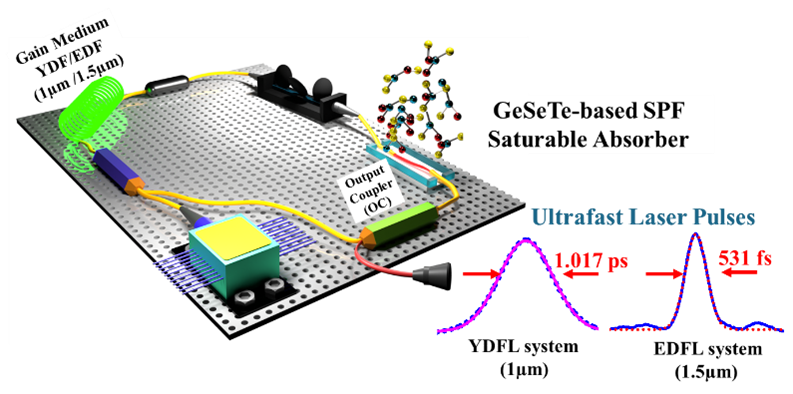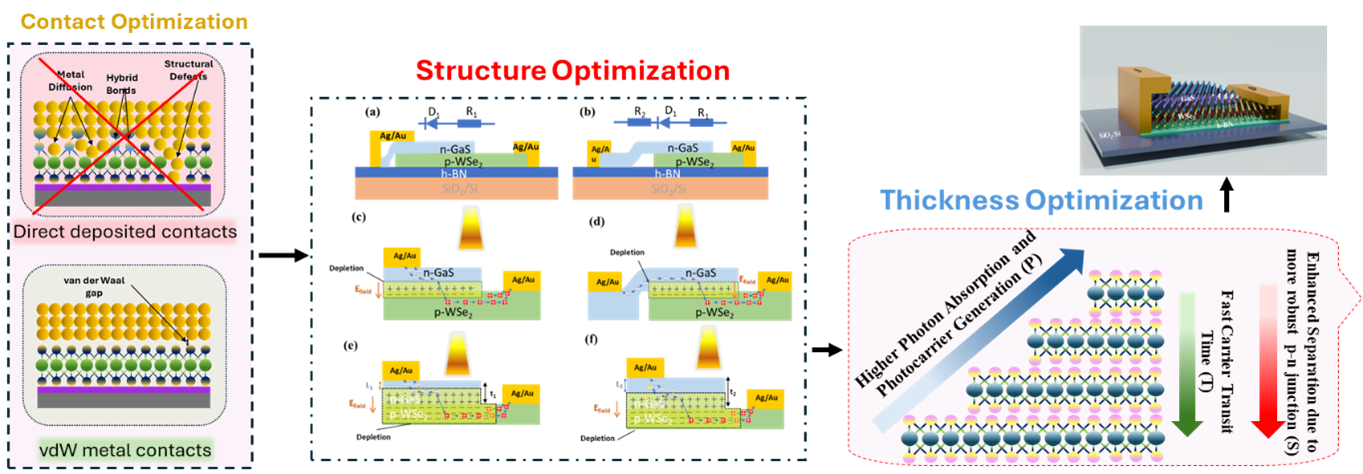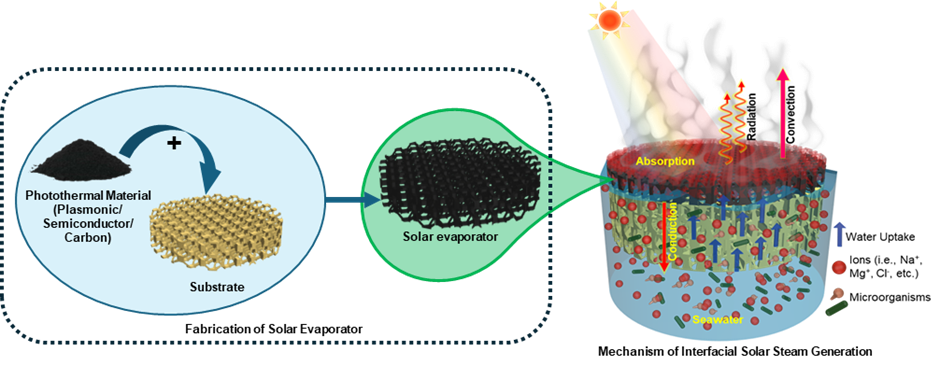Innovation and Technology


Interdisciplinary Research with Optics and Photonics
Prof. Tsang Yuen-hong, Peter
Professor, Department of Applied Physics
We are an interdisciplinary team specializing in material synthesis, characterization, and device fabrication for applications in lasers, photosensors and photothermal technologies. Our research focuses on synthesizing, processing and characterizing low-dimensional materials, and applying them across various fields of optics and photonics.
Our current research interests include:
2D Materials for Nonlinear Optics and Ultrafast Photonics
Ultrafast lasers represent a remarkable advancement in photonics, with wide-ranging applications in precision micromachining, medical imaging, and spectroscopy. Their ability to generate extremely short pulses enables high-resolution imaging and advanced material processing, making them invaluable in both research and industrial settings.
Recently, two-dimensional (2D) materials have emerged as key contributors to the development of next-generation photonic devices. In our laboratory, we investigate the nonlinear optical (NLO) properties of 2D materials and leverage them to produce ultrashort laser pulses. Our recent research has focused on the NLO responses of 2D ternary GeSeTe nanosheets, which we have successfully employed as saturable absorbers. This approach has enabled the generation of ultrashort laser pulses with durations of 1.017 picoseconds and 531 femtoseconds.
By harnessing the unique characteristics of these materials, we aim to further enhance the performance of ultrafast laser systems, paving the way for innovative applications in telecommunications, biomedical engineering and fundamental research.
Multivariate Optimization of Van der Waals Photodiodes for Multi-functional Optoelectronics
Our research involves a multifactorial study of van der Waals (vdW) photodiodes. We analyze and compare key figures of merit, such as the power exponent (α) and recombination order (β), and investigate their evolution across multiple devices to achieve near-unity values in all vdW (a-vdW) devices. This demonstrates recombination-trapping resilience. In contrast, a similar device patterned using traditional lithography techniques shows significant degradation, with the value of α decreasing to almost half. This suggests that most recombination-trapping and performance degradation occur at the metal-2D interface, supporting our argument for a renewed approach to contact integration strategies for 2D photodiodes.
Additionally, efficiency analysis, along with the measured Fermi-level alignment at the heterojunction of our a-vdW devices, highlights the importance of precisely engineered layer thicknesses to achieve a robust p-n junction. This balance is critical for optimizing photocarrier generation, recombination, separation, transport, and extraction. Furthermore, due to the excellent photovoltaic performance of the photodiode, it has been successfully utilized in demonstrating multi-band imaging applications, serving as both a single-pixel detector and a gate-tunable optoelectronic logic AND gate. This positions the device as a promising candidate for multi-functional optoelectronics.
Photothermal Materials for Sustainable Water and Energy Solutions
Our research focuses on synthesizing and analyzing the characteristics of various photothermal materials, including plasmonic, semiconductor-based, and carbon-based materials, to address real-world challenges. These materials have the ability to absorb sunlight and convert it into heat energy. We fabricate various types of solar evaporators by incorporating photothermal materials into porous substrates with low thermal conductivity. These solar evaporators float on the surface of water, efficiently absorbing a broad spectrum of sunlight and converting it into heat to evaporate seawater or wastewater at the air-water interface. The resulting vapor can then be condensed to produce freshwater.
Unlike conventional systems, this approach does not use thermal energy to heat bulk water from the bottom of the reservoir, significantly reducing heat loss and enhancing system efficiency. The solar-to-vapor generation efficiency of such systems often exceeds 80%. Furthermore, the system operates without the need for electricity, making it highly suitable for addressing the challenges of the water-energy nexus.
In addition, our group has developed a solar evaporator-based system capable of generating high-temperature steam for sterilizing medical equipment. These systems are not only cost-effective but also have the potential to contribute to a greener world by reducing carbon emissions.
光學與光子學的跨學科研究
曾遠康教授
應用物理學系教授
我們是在激光、光傳感器與光熱應用方面致力研究材料合成、特性以及裝置製備的一支跨學科團隊,研究包括低維材料的合成、加工和表徵,並將其應用於光學與光子學等不同範疇。
目前的研究重點包括:
用於非線性光學與超快光子學的二維材料
超快激光器是光子學領域的一項重大突破,其應用範圍涵蓋精密微加工、醫學成像與光譜分析。憑藉其極短脈衝的獨特性,超快激光可產生出高分辨率成像與先進材料加工技術,讓它成為科研與工業應用方面不可或缺的工具。
近年,二維(2D)材料為光子學裝置的研發帶來了不少突破。我們的實驗室更專注於利用2D材料的非線性光學(NLO)特性,研發出可用於超短激光脈衝技術的新材料。近期,我們為2D三元GeSeTe納米片的非線性光學反應進行了重點研究,成功將其用作可飽和吸收體,因而開發出1.017皮秒與531飛秒的超短脈衝輸出。
透過發掘這些材料的獨特性質,我們進一步提升了超快激光系統的性能與功能,為通訊技術、生物醫學工程及基礎研究等領域的創新應用開闢了新道路。
多功能光電裝置范德華二極管的多元化改良研究
我們的研究主要圍繞范德華(vdW)光電二極管展開多重要素的分析。透過比較功率指數α、復合階數β等關鍵性能參數及其在多種裝置中的演變規律,我們成功為全范德華(a-vdW)裝置的各參數帶來接近的理想值,展現出對復合-陷阱效應的強耐受特性。相較之下,採用傳統光刻技術圖像化的同類裝置中,α值顯著降低至一半。這表明大多數複合捕獲和性能下降出現在金屬-2D界面處,亦驗證了我們提出有關2D光電二極體接觸集成策略的新方法之論點。
此外,效率分析以及我們在a-vdW裝置的異質接面處測量的費米能階排列的實測數據表明:透過精確調控材料的厚度,可帶來穩定的p-n結,從而為光生載流子的生成-復合、分離、傳輸與提取過程帶來了關鍵的平衡性。此外,由於光電二極體具有優異的光伏性能,它已成功用於演示多波段成像應用,既可用作單像素探測器,亦可用作閘極可調的光電邏輯與閘,讓它有機會成為多功能光電子裝置的理想組成部份。
用於可持續水源與能源解決方案的光熱材料之研究
我們的研究重點包括合成並分析各類光熱材料(等離子體、半導體和碳基材料)的特性,以解決實際應用的挑戰。這些材料可以吸收陽光並將其高效地轉化為熱能。透過將光熱材料融入低導熱率的多孔基板上,我們製作出多種太陽能蒸發器。這些太陽能蒸發器可漂浮於水面,透過吸收寬譜太陽光並將其轉化為熱能,在空氣-水界面處直接蒸發海水或廢水,產生的蒸汽經冷凝後可轉化成淡水。
與傳統系統不同,這種技術無須從儲水池底部加熱,從而大幅降低熱量損失,並使光熱轉換的效率大幅提升至80%以上。此外,系統全程無須電力或使用昂貴的聚焦光學元件即可運作,非常適合用於水淨化和太陽能轉換等應用。
此外,我們團隊還開發了可用於醫療設備消毒的太陽能高溫蒸發器,其不僅具有成本效益,還可以減少碳排放量而帶來更綠色的未來。





